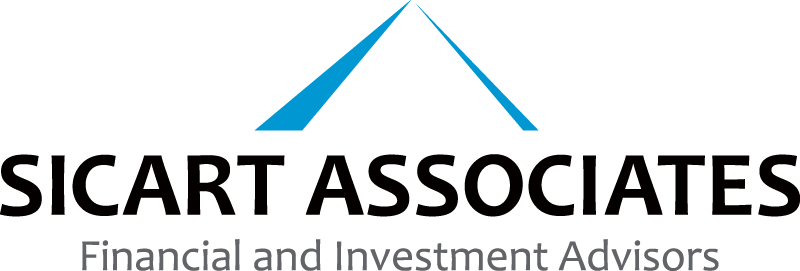Articles
What’s your measure of success? What is your finish line?
This fall, one October day, I was enjoying a chilly morning drive on a windy mountain road through the beautiful dense Oregon spruce forest. I was on the way to Intel’s Portland Campus. The sun was just rising above the mountain tops, and I was already wondering what kind of questions I will be able to answer on the spot, and what kind of questions will still linger long after I leave…

My dear friend, Intel’s Stock Investment Club President Yedu Jathavedan not only kindly invited me to give a talk on investing, but also generously hosted a book signing for my newly published book – Money, Life, Family: My Handbook: My complete collection of principles on investing, finding work & life balance, and preserving family wealth.
Yedu has done an incredible job bringing many wonderful speakers to Intel. Among them, you will find Saurabh Madaan from Markel Corporation, who I greatly enjoyed meeting in Zurich this summer, Guy Spier, the author of “Education of a Value Investor”, with whom I had a very inspiring lunch conversation last year, and whose book gave me the courage to write more, Jacob Taylor, the author of “Rebel Allocator”, who is a dear friend, and a brave crew member on my sailing expeditions, Prof. Aswath Damodaran, from NYU Stern School of Business, whose thoughtful talk on stock valuations I remember hearing in the midst of the 2009 Financial Crisis, and Tom Russo from Gardner Russo & Gardner, who left his earlier Intel talk with my book in his hand!
During that half day at Intel discussing stock picking, and sharing my experience as an investment advisor to families and entrepreneurs, I kept hearing a very similar question asked in a dozen ways – What’s your measure of success? What is your finish line? How you know you are doing the right thing? Later that day, wandering around charming downtown Portland with a delicious donut from a small local shop in one hand, a pen and notepad in the other, I felt inspired to start writing down my answer…
With the U.S. stock market reclaiming past peaks and reaching new highs, many stock pickers seem increasingly disenchanted with patient and disciplined investing, where we actually look at what we buy, and we pay attention to the price we pay, and most of all, we don’t forget what risks we take.
Last year’s 20% December sell-off is a long-forgotten tale, the Fed’s interest rate hikes belong to the past, even fears about trade wars, impeachment, elections, and Brexit don’t matter anymore – the market is at an all-time high, and volatility disappeared again, but for many investing hasn’t been smooth sailing. Even my own idols, Warren Buffett, and Charlie Munger, who are comfortably sitting on the world’s biggest corporate cash pile, have watched the stock price of their Berkshire Hathaway falter over the last two years lagging the overall stock market, and that’s despite help from a massive Apple position and the addition of Amazon among other exciting stocks. But in the long run, does it even matter?
This experience reminds me of a story shared by Captain Ramón Carlin, who in 1974 joined the first edition of one of the world’s great sailing competitions, the Whitbread Round the World Race. The original route of this contest was designed to follow old trade routes followed by the square riggers that carried cargo around the globe during the 1800s. Seventeen boats with expert crews from around the world participated, and a staggering 3,000 spectator boats set out to witness the start. Needless to say, navigation and weather forecasts were primitive compared to what they are today.
One of the most improbable competitors was Ramón Carlin, a middle-aged Mexican businessman. He was a maritime novice, having sailed only in Acapulco for a couple of years. He joined the race on the strength of an ad he saw in a magazine during a visit to the United Kingdom. What he lacked in sailing experience, however, he made up with the boat and the crew selection, preparation, discipline, and perseverance. His crew was up against some extremely serious competition. The British Royal Navy had not only purchased six yachts to train 800 men, but also chose the best four 10-man crews for each of the four legs of the race! Now, how is that for a level playing field?
Carlin’s adventure has been beautifully retold in an award-winning documentary aptly called: “The Weekend Sailor.” One point in particular caught my imagination: as you sail the open oceans for weeks on end, you never see your opponents. It’s only you, your crew, your boat, and the ocean. There are easy days, moments of horror, and a constant fight for survival. You only catch sight of the other boats as you begin and end each leg of the race, and at the finish line. Ramón and his crew won the race by circumnavigating the globe in 133 days and 13 hours!
Watching the documentary made me think that as investors, we can extrapolate from Carlin’s experience. With today’s technology, we can track performance daily, we can compare it with all possible benchmarks and even with our peers almost every moment of the day. It’s easy to lose sight of what matters most! We might forget that we are trading short-term returns for long-term risks that we cannot afford to take. No one has put this better than Benjamin Graham, the father of value investing. He wrote: “The best way to measure your investing success is not by whether you’re beating the market but by whether you’ve put in place a financial plan and a behavioral discipline that are likely to get you where you want to go. In the end, what matters isn’t crossing the finish line before anybody else but just making sure that you do cross it.”
What is your finish line? How you know you are doing the right thing? What’s your measure of success? Ours is keeping and growing our clients’ and our own capital over the long run, while avoiding the risk of a permanent loss of capital. We’d like to double our client’s wealth every 5 to 15 years, which translates to a 5% to 15% annual return over the long-run. We intend to weather all storms ahead, even if it means we don’t win all of the legs of the race.
The worst misfortune for a sailor is death, the worst misfortune for an investor is a permanent loss of capital. Seasoned investors know well what sailors learn the hardest way – it sometimes pays to fall behind, only to make sure that you make it to the finish line at all.
We don’t always know where we stand relative to peers or benchmarks, but we ALWAYS know that we stick to the plan and the discipline we have put in place. Do you?
Happy Investing!
Bogumil Baranowski | Portland, Oregon
Published: November 8th, 2019
Disclosure:
This article is not intended to be a client‐specific suitability analysis or recommendation, an offer to participate in any investment, or a recommendation to buy, hold or sell securities. Do not use this report as the sole basis for investment decisions. Do not select an asset class or investment product based on performance alone. Consider all relevant information, including your existing portfolio, investment objectives, risk tolerance, liquidity needs and investment time horizon. This report is for general informational purposes only and is not intended to predict or guarantee the future performance of any individual security, market sector or the markets generally.

